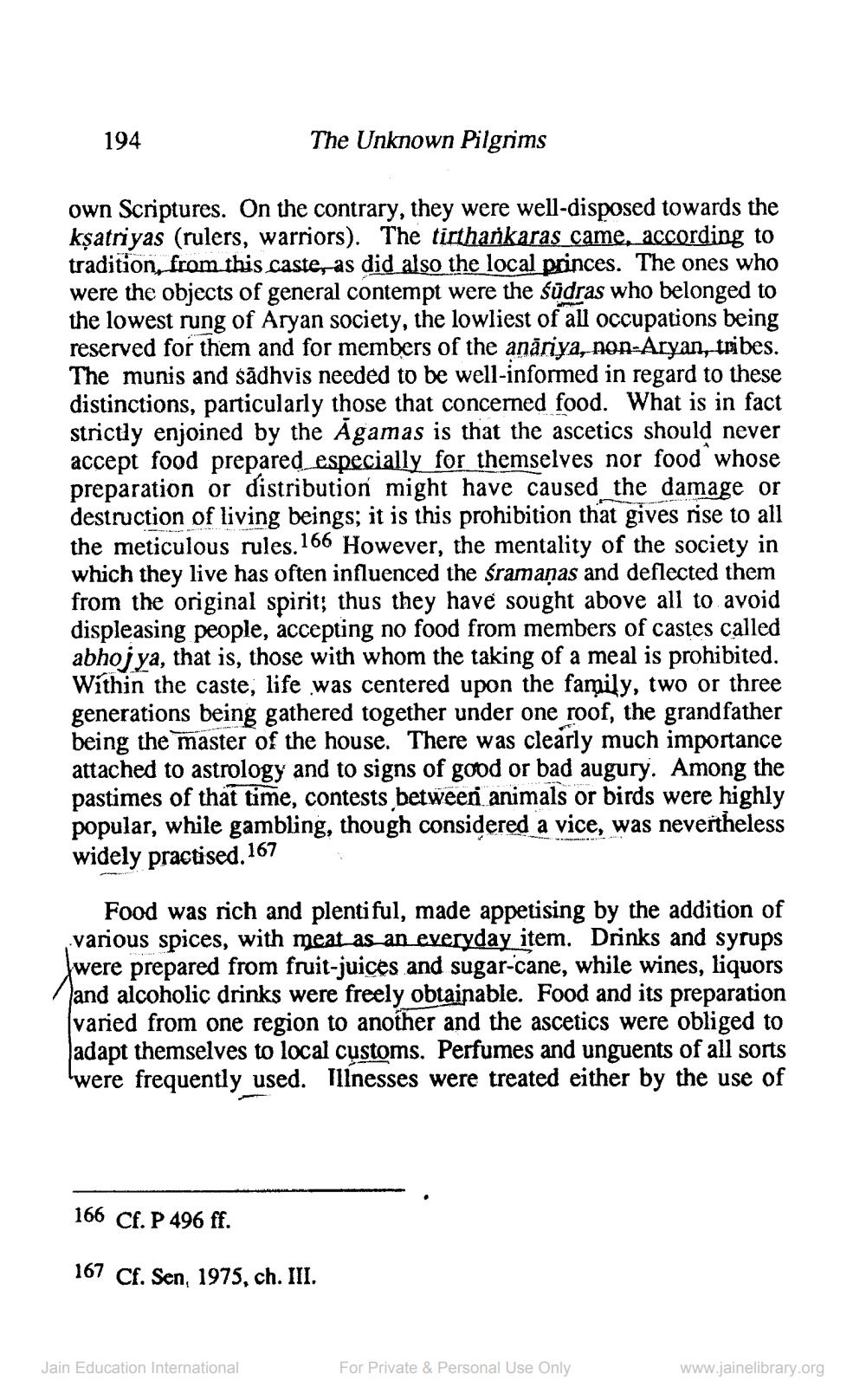________________
194
The Unknown Pilgrims
own Scriptures. On the contrary, they were well-disposed towards the ksatriyas (rulers, warriors). The tirthańkaras came, according to tradition, from this caste, as did also the local princes. The ones who were the objects of general contempt were the südras who belonged to the lowest rung of Aryan society, the lowliest of all occupations being reserved for them and for members of the anāriya, non-Aryan, tribes. The munis and sãdhvis needed to be well-informed in regard to these distinctions, particularly those that concerned food. What is in fact strictly enjoined by the Agamas is that the ascetics should never accept food prepared especially for themselves nor food whose preparation or distribution might have caused the damage or destruction of living beings; it is this prohibition that gives rise to all the meticulous rules. 166 However, the mentality of the society in which they live has often influenced the śramaņas and deflected them from the original spirit; thus they have sought above all to avoid displeasing people, accepting no food from members of castes called abhoj ya, that is, those with whom the taking of a meal is prohibited. Within the caste, life was centered upon the family, two or three generations being gathered together under one roof, the grandfather being the master of the house. There was clearly much importance attached to astrology and to signs of good or bad augury. Among the pastimes of that time, contests between animals or birds were highly popular, while gambling, though considered a vice, was nevertheless widely practised. 167
Food was rich and plentiful, made appetising by the addition of various spices, with meat as an everyday item. Drinks and syrups were prepared from fruit-juices and sugar-cane, while wines, liquors and alcoholic drinks were freely obtainable. Food and its preparation varied from one region to another and the ascetics were obliged to adapt themselves to local customs. Perfumes and unguents of all sorts 'were frequently used. Illnesses were treated either by the use of
166 Cf. P 496 ff.
167 Cf. Sen, 1975, ch. III.
Jain Education International
For Private & Personal Use Only
www.jainelibrary.org




